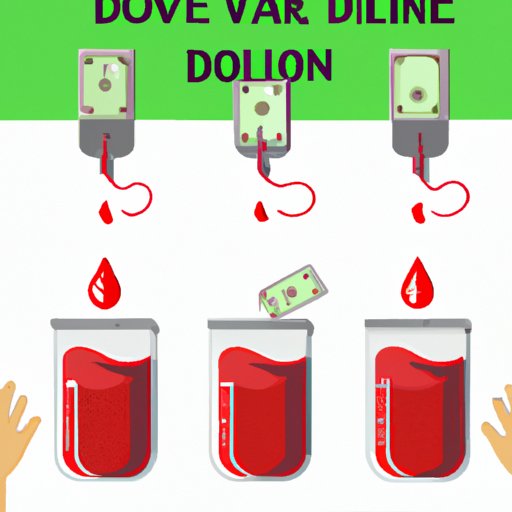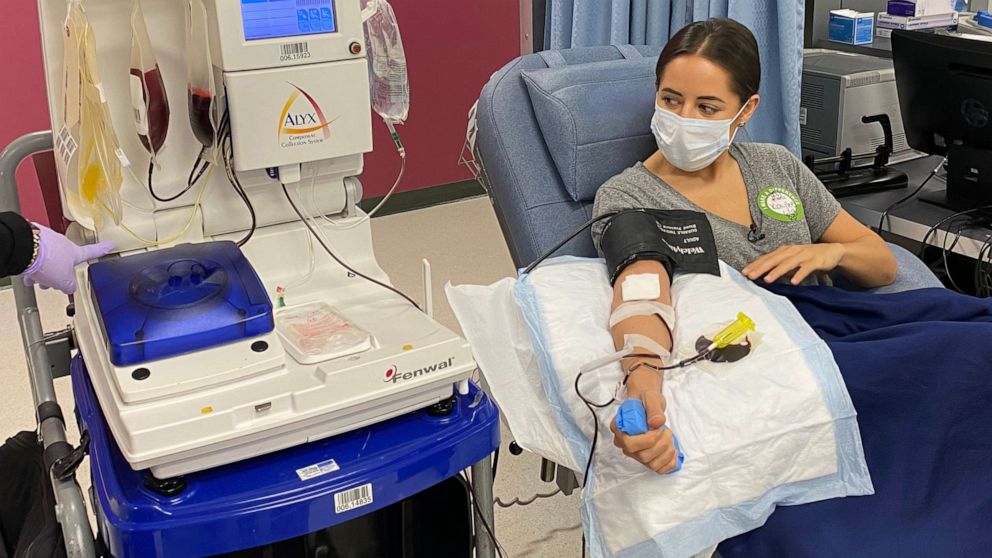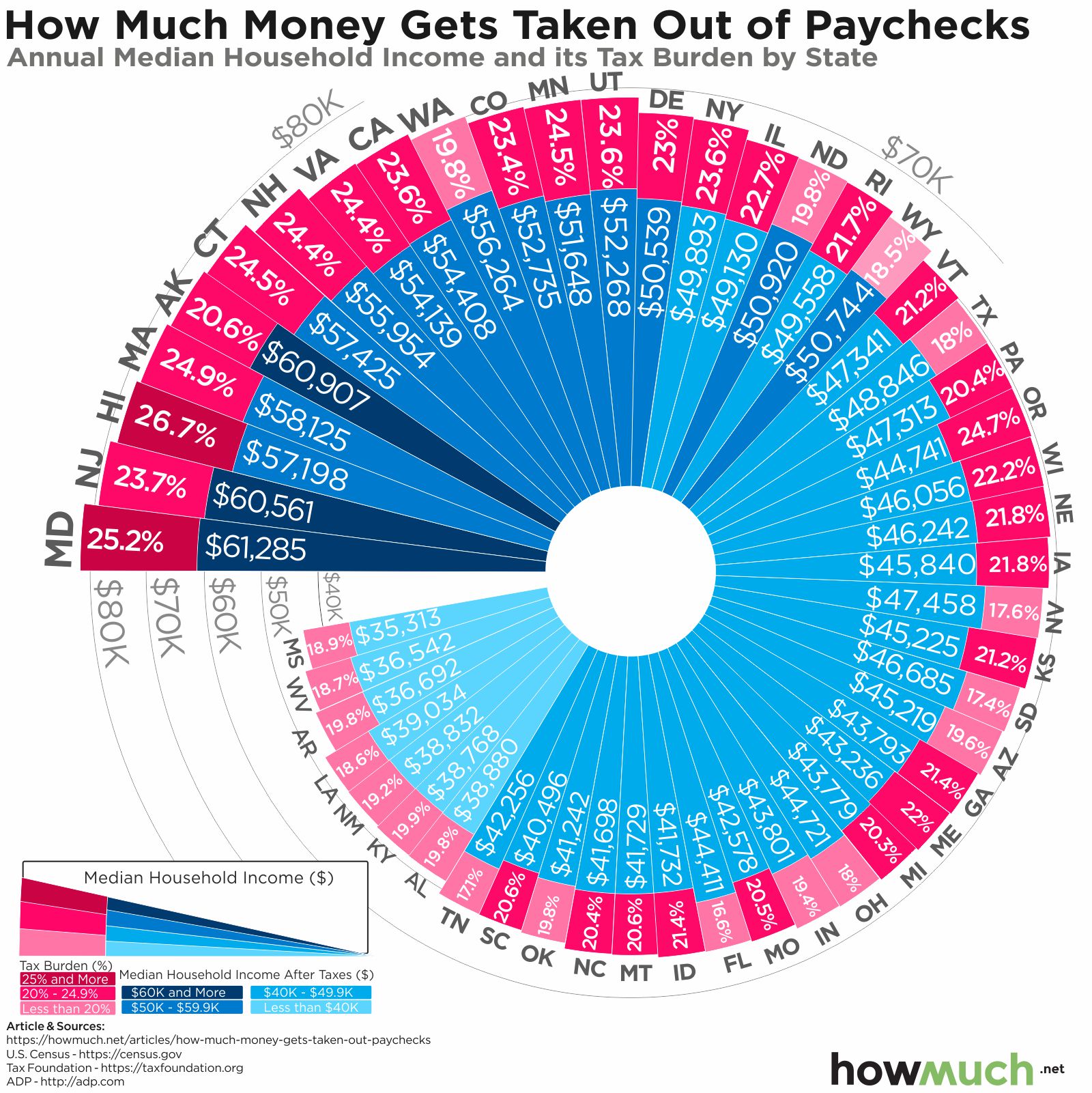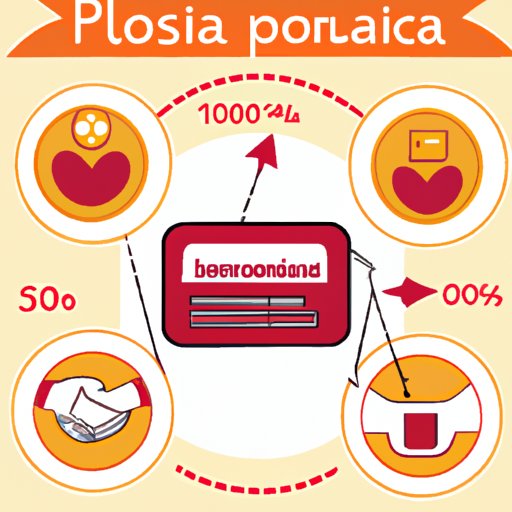What is Plasma Donation and How Does it Work?
Plasma donation is a vital process that involves collecting the liquid portion of blood, known as plasma, from donors. This plasma is then used to create life-saving therapies for patients with rare and serious diseases, such as hemophilia and immunodeficiency disorders. The plasma donation industry has experienced significant growth in recent years, driven by increasing demand for plasma-derived therapies.
The plasma donation process typically involves a series of steps, including registration, medical screening, and the actual donation. Donors are required to meet specific eligibility criteria, such as age, weight, and medical history, to ensure their safety and the quality of the plasma collected. Once a donor is deemed eligible, they will undergo a medical screening, which includes a physical examination, blood tests, and a review of their medical history.
During the donation process, a sterile needle is inserted into the donor’s arm, and the plasma is collected using a specialized device. The plasma is then separated from the other blood components, such as red and white blood cells, and frozen for later use. The entire process typically takes around 1-2 hours, depending on the individual’s donation history and the specific requirements of the donation center.
Plasma donation centers play a critical role in the collection and processing of plasma. These centers are responsible for ensuring the quality and safety of the plasma collected, as well as providing a comfortable and welcoming environment for donors. With the increasing demand for plasma-derived therapies, the plasma donation industry is expected to continue growing, providing opportunities for individuals to earn extra income while contributing to a good cause.
For those interested in selling plasma, it’s essential to understand the process and the factors that influence compensation. While the amount of money you can earn selling plasma varies depending on several factors, including location, weight, and frequency of donation, it’s possible to earn a significant income by donating regularly. In the next section, we’ll explore the factors that affect compensation and provide tips on how to maximize your earnings.
How Much Can You Earn Selling Plasma: Factors Affecting Compensation
When considering plasma donation as a way to earn extra income, it’s essential to understand the factors that influence compensation. The amount of money you can earn selling plasma varies depending on several factors, including location, weight, and frequency of donation. In this section, we’ll explore these factors in more detail and provide insights on how to maximize your earnings.
Location is a significant factor in determining compensation for plasma donation. Donors in urban areas tend to earn more than those in rural areas, as the demand for plasma is higher in cities. Additionally, some states have higher pay rates for plasma donation than others. For example, donors in California and Texas tend to earn more than those in other states.
Weight is another factor that affects compensation. Donors who weigh more tend to earn more, as they can donate more plasma per session. However, it’s essential to note that donors must meet specific weight requirements to ensure their safety and the quality of the plasma collected.
Frequency of donation is also a critical factor in determining compensation. Donors who donate regularly tend to earn more than those who donate sporadically. This is because frequent donors can provide a steady supply of plasma, which is essential for the production of life-saving therapies.
Other factors that can affect compensation include the type of plasma being collected, the donor’s medical history, and the specific requirements of the donation center. Some donation centers may offer higher pay rates for specific types of plasma, such as plasma with high levels of antibodies.
On average, donors can earn between $20 to $50 per donation, with some centers offering up to $100 per donation. However, it’s essential to note that these figures are subject to change and may vary depending on the specific center and the donor’s individual circumstances.
To give you a better idea of how much you can earn selling plasma, here are some approximate pay rates for different donation centers:
Grifols: $20 to $40 per donation
BioLife: $25 to $50 per donation
CSL Plasma: $30 to $60 per donation
Keep in mind that these figures are subject to change and may vary depending on the specific center and the donor’s individual circumstances.
Plasma Donation Centers: A Comparison of Pay Rates and Requirements
When it comes to selling plasma, it’s essential to research and compare the pay rates and requirements of different plasma donation centers. In this section, we’ll provide an overview of three major plasma donation centers: Grifols, BioLife, and CSL Plasma.
Grifols is one of the largest plasma donation centers in the world, with over 250 locations across the United States. Grifols offers competitive pay rates, ranging from $20 to $40 per donation, depending on the location and the donor’s weight. To be eligible to donate at Grifols, individuals must be at least 18 years old, weigh at least 110 pounds, and meet specific medical requirements.
BioLife is another major plasma donation center, with over 100 locations across the United States. BioLife offers pay rates ranging from $25 to $50 per donation, depending on the location and the donor’s weight. To be eligible to donate at BioLife, individuals must be at least 18 years old, weigh at least 110 pounds, and meet specific medical requirements.
CSL Plasma is a leading plasma donation center, with over 270 locations across the United States. CSL Plasma offers pay rates ranging from $30 to $60 per donation, depending on the location and the donor’s weight. To be eligible to donate at CSL Plasma, individuals must be at least 18 years old, weigh at least 110 pounds, and meet specific medical requirements.
The following table provides a comparison of the pay rates and requirements for each plasma donation center:
| Donation Center | Pay Rate | Weight Requirement | Age Requirement |
|---|---|---|---|
| Grifols | $20-$40 | 110 pounds | 18 years old |
| BioLife | $25-$50 | 110 pounds | 18 years old |
| CSL Plasma | $30-$60 | 110 pounds | 18 years old |
It’s essential to note that pay rates and requirements may vary depending on the specific location and the donor’s individual circumstances. It’s recommended to research and compare the pay rates and requirements of different plasma donation centers in your area to find the best option for your needs.
Maximizing Your Earnings: Tips for Frequent Donors
As a frequent plasma donor, it’s essential to maximize your earnings while maintaining a healthy lifestyle. Here are some tips to help you achieve your goals:
Maintaining a healthy lifestyle is crucial for frequent plasma donors. Eating a balanced diet, staying hydrated, and exercising regularly can help ensure that your body is able to recover quickly from the donation process. Additionally, getting enough sleep and managing stress can also help to improve your overall health and well-being.
Staying hydrated is particularly important for plasma donors, as it helps to ensure that your body is able to produce enough plasma to meet the demands of frequent donation. Drinking plenty of water and avoiding caffeinated and carbonated beverages can help to keep your body hydrated and your plasma levels stable.
Managing your donation schedule is also critical for maximizing your earnings. Donating regularly can help to ensure that you are able to earn a steady income, but it’s essential to avoid over-donating. Donating too frequently can lead to fatigue, dehydration, and other health problems, which can ultimately impact your ability to earn a living through plasma donation.
Here are some additional tips for frequent plasma donors:
- Keep track of your donation schedule and plan your donations in advance to ensure that you are able to earn a steady income.
- Avoid donating too frequently, as this can lead to fatigue, dehydration, and other health problems.
- Stay hydrated by drinking plenty of water and avoiding caffeinated and carbonated beverages.
- Eat a balanced diet and exercise regularly to maintain a healthy lifestyle.
- Get enough sleep and manage stress to improve your overall health and well-being.
By following these tips, frequent plasma donors can maximize their earnings while maintaining a healthy lifestyle. Remember to always prioritize your health and well-being, as this is essential for your ability to earn a living through plasma donation.
Additionally, some plasma donation centers offer loyalty programs or rewards for frequent donors. These programs can provide additional incentives for donors to continue donating regularly, and can help to maximize earnings. Be sure to ask about these programs when you visit your local plasma donation center.
The Benefits of Selling Plasma: More Than Just a Paycheck
While selling plasma can be a lucrative way to earn extra income, it’s essential to remember that the benefits of plasma donation extend far beyond the financial compensation. In this section, we’ll explore the benefits of plasma donation and why it’s a rewarding experience for many donors.
One of the most significant benefits of plasma donation is the opportunity to contribute to life-saving medical treatments. Plasma is used to create therapies for patients with rare and serious diseases, such as hemophilia and immunodeficiency disorders. By donating plasma, individuals can help make a difference in the lives of others and contribute to the development of life-saving treatments.
In addition to the medical benefits, plasma donation can also provide a sense of community and connection for donors. Many plasma donation centers offer a welcoming and supportive environment, where donors can meet new people and make friends. Donors can also feel a sense of pride and satisfaction knowing that they are contributing to a good cause.
Another benefit of plasma donation is the opportunity to learn about the donation process and the importance of plasma in medical treatments. Donors can gain a deeper understanding of the medical applications of plasma and the impact it has on patients’ lives. This knowledge can be both empowering and rewarding, as donors feel that they are making a meaningful contribution to the medical community.
Furthermore, plasma donation can also provide a sense of personal growth and development. Donors can develop a greater appreciation for the importance of medical research and the role that plasma plays in the development of life-saving treatments. Donors can also develop a greater sense of empathy and understanding for patients who rely on plasma-derived therapies.
Overall, the benefits of plasma donation extend far beyond the financial compensation. By donating plasma, individuals can contribute to life-saving medical treatments, gain a sense of community and connection, learn about the donation process, and develop a greater sense of personal growth and development.
As a plasma donor, you can take pride in knowing that your contributions are making a difference in the lives of others. Whether you’re motivated by the financial compensation or the opportunity to contribute to a good cause, plasma donation can be a rewarding and fulfilling experience.
Common Questions and Concerns: Addressing Plasma Donation Myths
As with any medical procedure, plasma donation raises several questions and concerns. It’s essential to separate fact from fiction to ensure a safe and successful donation experience. Here, we’ll address some common myths and concerns surrounding plasma donation.
**Myth: Plasma donation is painful and uncomfortable.**
Reality: While some people may experience minor discomfort during the donation process, it’s generally a painless procedure. Donors may feel a slight pinch when the needle is inserted, but this sensation is temporary and usually subsides quickly.
**Myth: Plasma donation can lead to serious health complications.**
Reality: Plasma donation is a safe process when performed at a reputable and licensed donation center. Donors are thoroughly screened before each donation to ensure their safety and the safety of the plasma collected. Additionally, donation centers follow strict guidelines to minimize the risk of complications.
**Myth: Plasma donation can cause fatigue and weakness.**
Reality: While some donors may experience temporary fatigue or dizziness after donation, this is usually due to dehydration or low blood sugar. Drinking plenty of water and eating a nutritious meal before and after donation can help alleviate these symptoms.
**Myth: You can’t donate plasma if you have a tattoo or piercing.**
Reality: Having a tattoo or piercing doesn’t necessarily disqualify you from donating plasma. However, you may need to wait a certain period, usually 12 months, after getting a tattoo or piercing before you can donate. This waiting period helps ensure the safety of the plasma collected.
**Myth: Plasma donation can affect your immune system.**
Reality: Plasma donation does not weaken your immune system. In fact, your body replaces the donated plasma within 24-48 hours, and your immune system remains intact. Donating plasma regularly can even help your body produce more antibodies, which can boost your immune system.
**Myth: You can’t donate plasma if you’re taking medications.**
Reality: Certain medications may affect your eligibility to donate plasma. However, many medications are acceptable, and donation centers will assess your medication use on a case-by-case basis. It’s essential to disclose all medications you’re taking during the screening process to ensure your safety and the safety of the plasma collected.
By addressing these common myths and concerns, you can make an informed decision about plasma donation. Remember, plasma donation is a safe and rewarding process that helps save lives. If you have any questions or concerns, don’t hesitate to reach out to a reputable donation center for guidance.
Getting Started: A Step-by-Step Guide to Becoming a Plasma Donor
Becoming a plasma donor is a straightforward process that requires some preparation and commitment. Here’s a step-by-step guide to help you get started:
**Step 1: Find a Plasma Donation Center**
Look for a reputable plasma donation center in your area. You can search online or check with local hospitals or medical organizations for recommendations. Some popular plasma donation centers include Grifols, BioLife, and CSL Plasma.
**Step 2: Meet the Eligibility Requirements**
Each plasma donation center has its own set of eligibility requirements, but most centers require donors to:
- Be at least 18 years old (19 in some states)
- Weigh at least 110 pounds
- Be in good overall health
- Pass a medical examination and screening test
- Provide proof of identity and residency
**Step 3: Prepare for Your First Donation**
Before your first donation, make sure to:
- Eat a nutritious meal and stay hydrated
- Avoid fatty foods and caffeine
- Get plenty of rest and avoid strenuous activities
- Bring any required documents, such as identification and proof of residency

Conclusion: Turning Plasma Donation into a Lucrative Side Hustle
Plasma donation is a rewarding and lucrative side hustle that offers numerous benefits beyond financial compensation. By understanding the process, requirements, and potential earnings, individuals can make informed decisions about becoming plasma donors. With the growing demand for plasma-derived therapies, the plasma donation industry is expected to continue its upward trend, providing opportunities for donors to earn extra income while contributing to life-saving medical treatments.
As discussed in this article, the amount of money you can earn selling plasma varies depending on factors such as location, weight, and frequency of donation. By maximizing earnings through frequent donations, maintaining a healthy lifestyle, and staying hydrated, individuals can increase their overall compensation. Additionally, plasma donation centers offer competitive pay rates and requirements, making it essential to research and compare options to find the best fit.
While plasma donation is a safe and regulated process, it’s essential to address common myths and concerns. By understanding the safety measures in place and the potential risks, individuals can make informed decisions about becoming plasma donors. Furthermore, the benefits of plasma donation extend beyond financial compensation, including contributing to life-saving medical treatments, gaining a sense of community, and learning about the donation process.
In conclusion, plasma donation is a viable side hustle that offers numerous benefits and opportunities for individuals to earn extra income. By following the steps outlined in this article, individuals can become plasma donors and start earning money while contributing to a good cause. With the growing demand for plasma-derived therapies, the plasma donation industry is expected to continue its growth, providing a lucrative opportunity for those willing to donate.
So, how much can you earn selling plasma? The answer depends on various factors, but with the right information and preparation, individuals can maximize their earnings and turn plasma donation into a lucrative side hustle. Whether you’re looking to earn extra income or contribute to a good cause, plasma donation is an opportunity worth considering.







